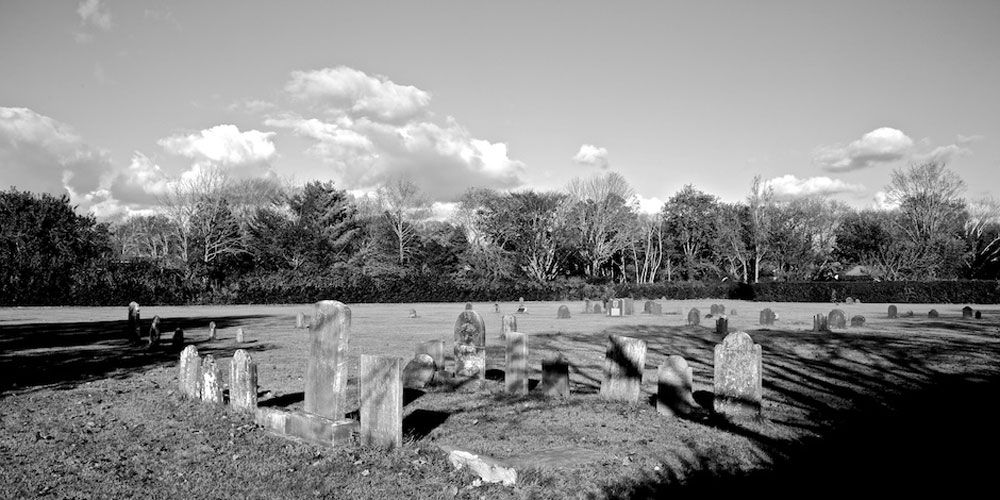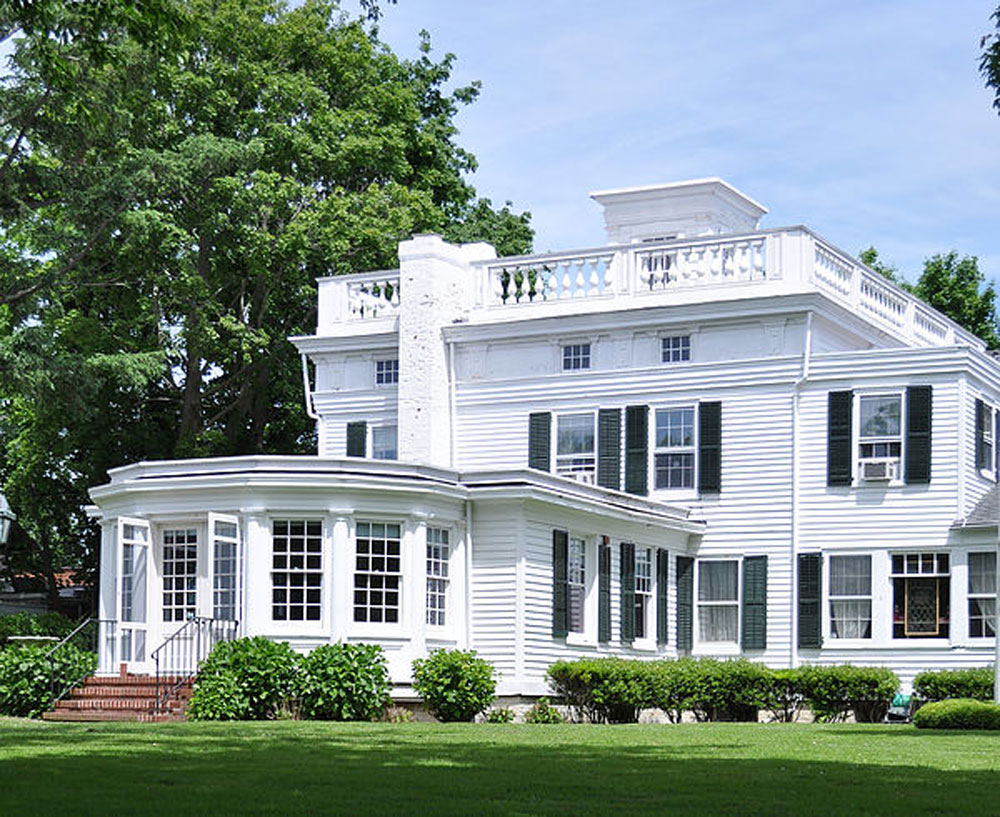
The Rogers Mansion - Southampton History Museum
Southampton - The First English Settlement in What is Now ‘The Hamptons!’
In 1640, Southampton’s first English settlers arrived in North Sea Harbor. Upon reaching shore, one of them is said to have exclaimed: “For conscience sake, we’re on dry land.” So the original landing place is called Conscience Point and has a historical marker . . .
An important whaling village called Feversham was quickly developed nearby. It became the third largest port in the colonies during the 17th century but disappeared 100 years later. Visitors to this quiet waterfront area can now find a 20-ton boulder commemorating Southampton’s founding by following a nature trail that boasts a rich variety of native shore plants and a host of birds. Sharing a parking lot with the area is the volunteer-run Conscience Point Shellfish Hatchery which supplies over 1 million oyster seeds to nearby bays.

Conscience Point Marker - North Sea - Where the original Settlers of Southampton Landed in 1640
- Town of Southampton Landmark & Historic Districts
- The Early History of Southampton N.Y. by George Rogers Powell
- Town and Country Magazine (2017): A Love Letter to Old Southampton
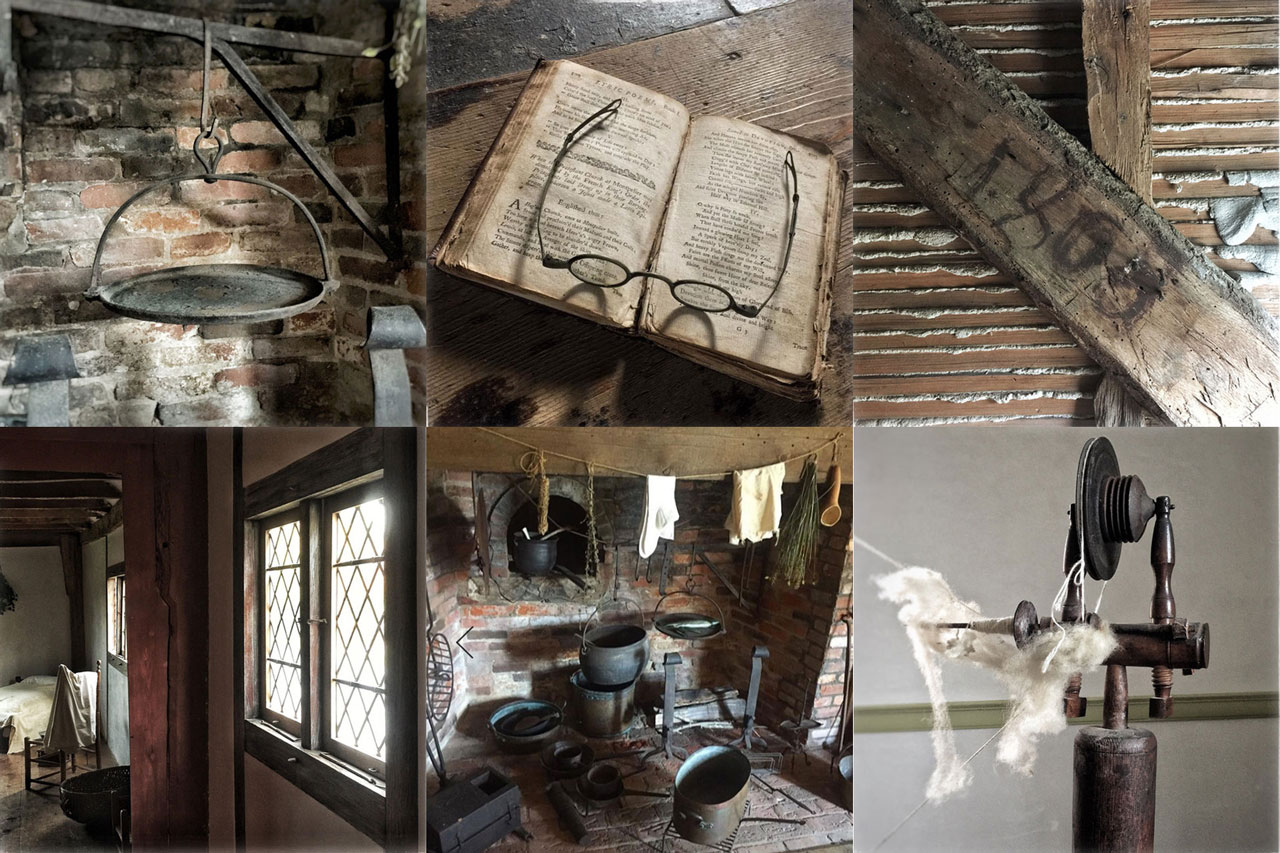
Southampton History Museum Buildings - Interior Details
Southampton History Museum - The Rogers Mansion Museum Complex
17 Meeting House Lane, Southampton 631.283.2494
March to December, Wednesday to Saturday, 11am to 4pm Admission: $5
- This Gilded Age mansion stands today on land that was awarded to William Rogers in 1645 and which remained in the Rogers family through eight generations. In 1899 the dwelling was purchased by Samuel L. Parrish; an attorney from New York City, summer colonist, and founder of the Parrish Art Museum. Shortly after Parrish’s death in 1932 the Southampton Village acquired the mansion and it became home to various organizations like the YMCA and Red Cross. Later, in 1952 the Southampton History Museum leased the house and grounds from the village and began restoration. The house is filled with furnishings donated by members of the Southampton community, most dating from the Victorian (1837-1901) and Edwardian eras (1901-1910). On the grounds behind the mansion is Old Southampton Village with historic structures collected from different areas of Southampton. They include a 19th-century paint store, a blacksmith’s shop, a carpentry shop, an 1830 one-room schoolhouse and the 1825 Sayre Barn.
- The New York Times (2015): At Rogers Mansion, 367 Years of Southampton History in a House
- Hamptons.com (2016): Southampton Historical Museum Presenting "Clubs And Hotels Of The Hamptons - The Prelude To The Summer Colony"
- Hamptons ArtHub (2018): Hunting the Whale - The Rise and Fall of a Southampton Industry

Thomas Halsey House and Garden
Thomas Halsey House Museum
249 S. Main St., Southampton 631.283.3527
June to October, Saturdays, 11am to 4pm or by appointment Admission: $4
- Thomas Halsey Sr., one of Southampton’s founders, and his family built the first farmhouse on this property a few years after arriving in 1640. The current house was built c. 1683 by Thomas Halsey Jr. who inherited his father’s property and used wood frame timbers from his father’s house to build his own. The house remained in the Halsey family for several generations. Visitors who pass through the weathered front door find the wide-planked floors, hand-hewn beams, furnishings, textiles and objects that were the backdrop for domestic farm life in colonial times. Outside, the culinary and medicinal plants that were once household necessities flourish in a replication of a colonial herb garden.
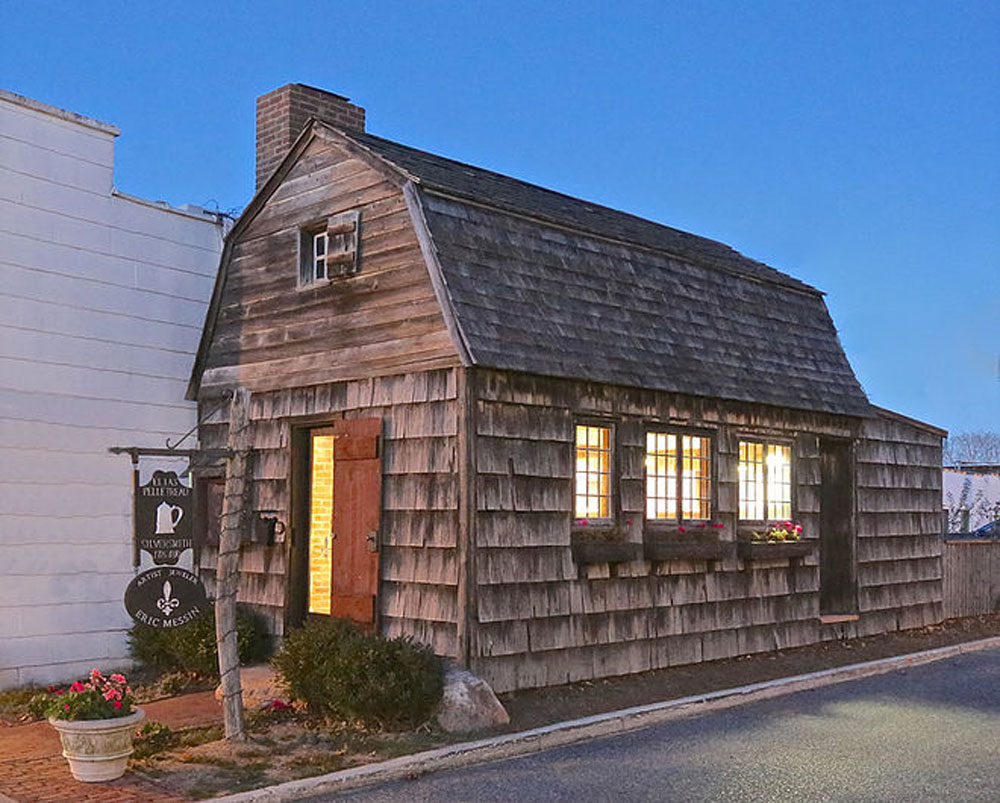
Pelletreau Silver Shop
Pelletreau Silver Shop
80 Main Street Southampton - Hours: Tuesday through Saturday, 11 am to 4 pm. Admission: Free
- This 1686 trade shop is the oldest continuously, opened trade shop in the Americas. It was originally built for Stephen Boyer’s as a dry goods shop. It was purchased in 1717 by Francis Pelletreau, a prosperous whale oil merchant, but its most famous occupant was his grandson, Elias Pelletreau, an acclaimed silversmith and celebrated patriot. Between 1750 and 1810, Elias Pelletreau crafted the tankards, flatware, porringers and other highly artistic but utilitarian items that are today collected by museums and fetch thousands of dollars. During the Revolutionary War, Pelletreau organized the local militia and could frequently be seen drilling his forces. His son, nephew and grandson continued the tradition of silversmithing into the 19th century in the same location and today Master Jeweler Eric Messin occupies the shop, creating jewelry, informing visitors of the shop’s historical importance and conducting workshops in jewelry-making. Take a look behind the shop and find a colonial-era vegetable garden managed by volunteers.
- Jewelry Making Classes (Check with the Museum for dates) - Students will learn the basics of jewelry making, from sculpting wax and soldering to setting stones and polishing. Master Jeweler Eric Messin will take you step by step to create a piece of jewelry that will be finished and ready to be worn.
The New York Times (2012): Making Jewelry at a Rustic Gem of a Workshop
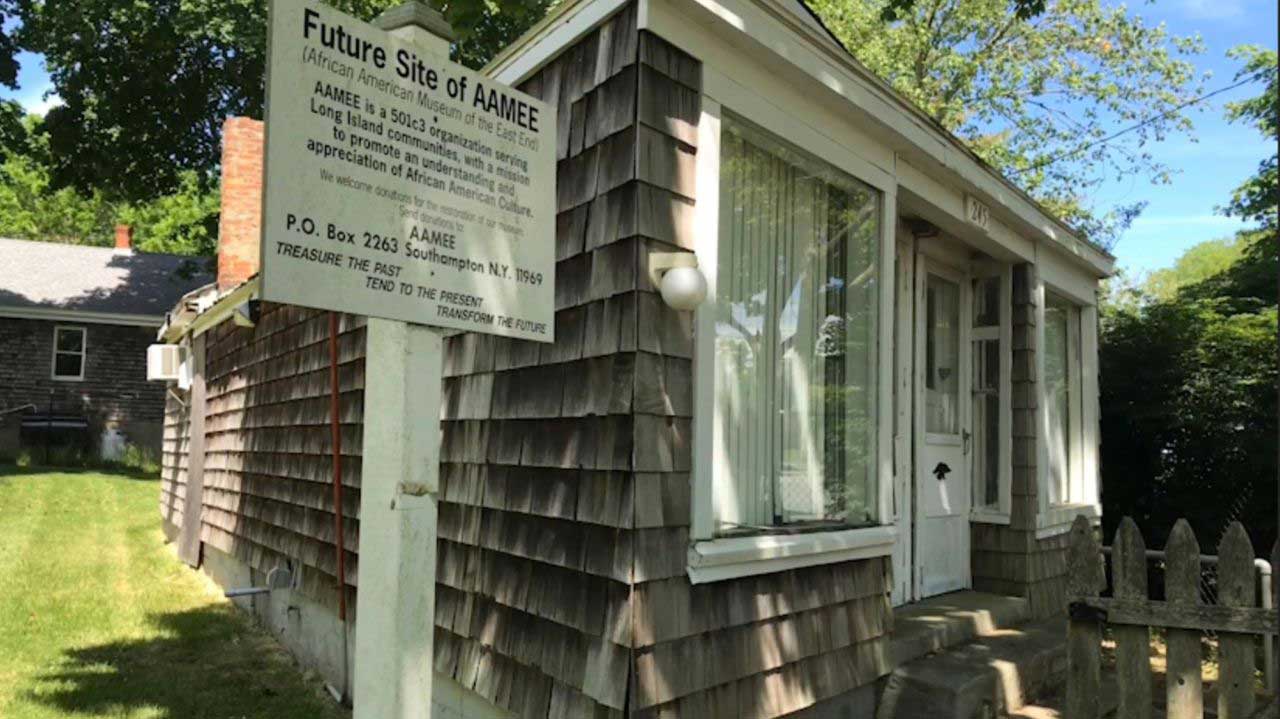
Future Site of the Southampton African American Museum - Once a Barber Shop!
Southampton African American Museum (SAAM)
245 North Sea Road, Southampton
- The Southampton African American Museum (SAAM) began in 2005 under the name The East End African American Museum and Center for Excellence. The single story building, affectionately called “The Barbershop," is currently under renovation and is expected to open in fall of 2019. It was a local gathering place for area African Americans from the 1940s until its closing. For the past 13 years, the museum has led a virtual existence, presenting film festivals, plays, student art exhibitions, live music, and a variety of other programs related to African-American history and culture at various East End venues.
- 27East (2018): Groundbreaking Held at Future Site of the Southampton African American Museum
- East Hampton Star (2018): ‘The Beginning of the Beginning’ at Southampton African American Museum
- Dan’s Papers (2012): Southampton’s African American Museum
- The Independent (2018): A Walk Down Memory Lane with Randy Conques
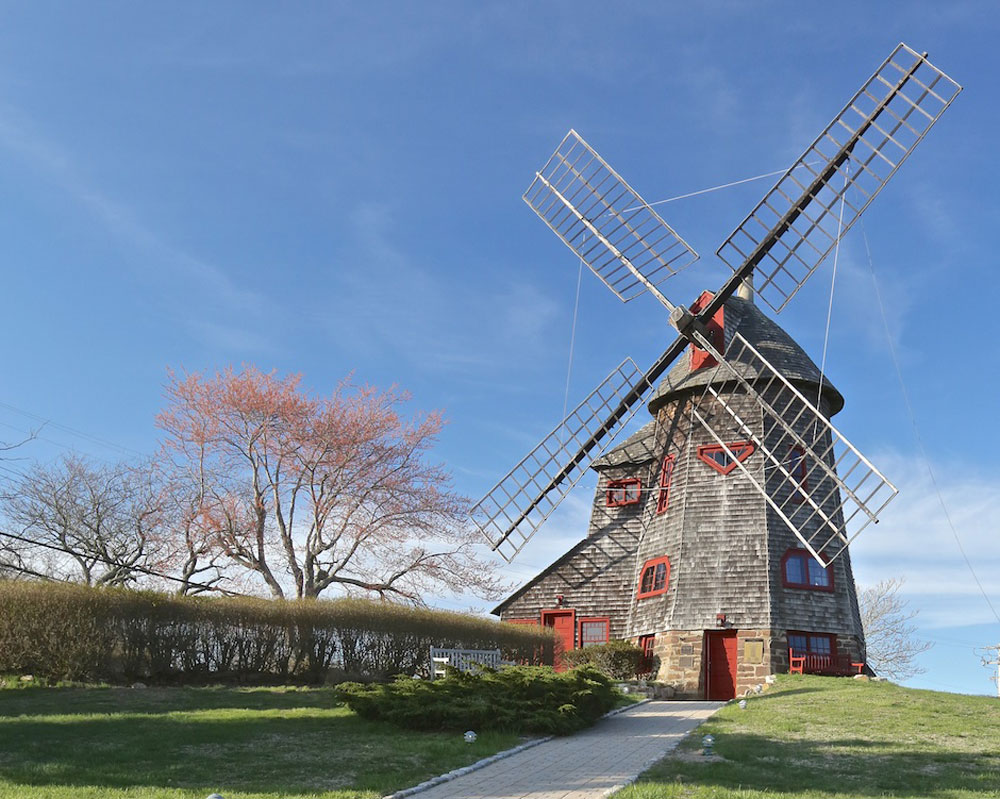
Windmill, Circa Early 1700s - on the Campus of Southampton College, Courtesy of AAQ
